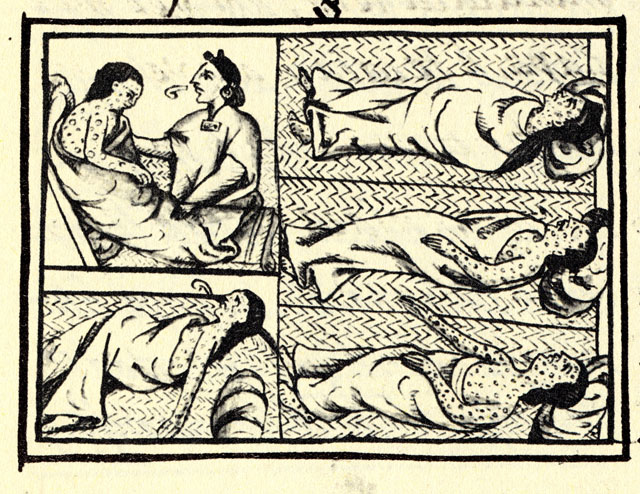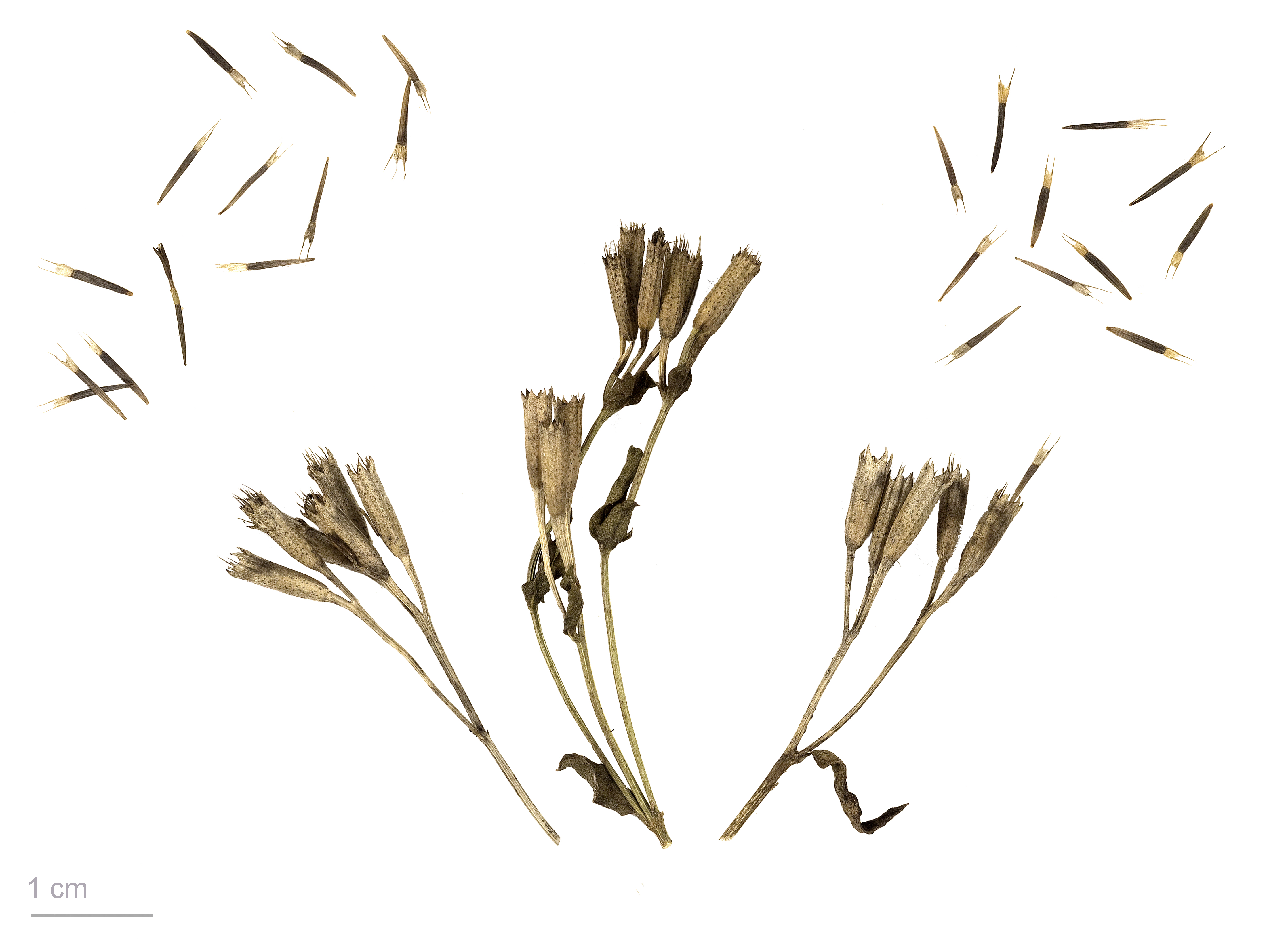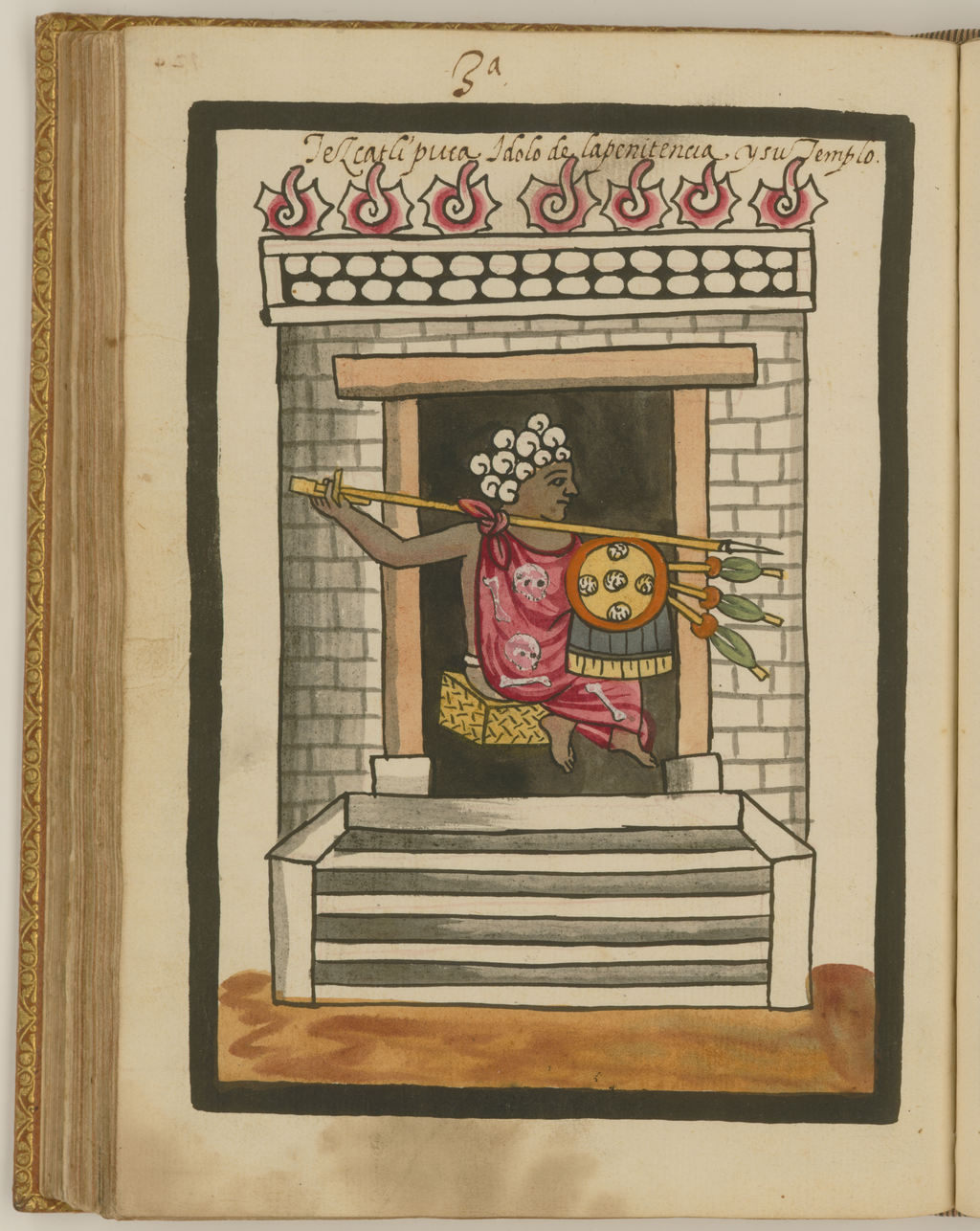|
Aztec Medicine
Aztec medicine concerns the body of knowledge, belief and ritual surrounding human health and sickness, as observed among the Nahuatl-speaking people in the Aztec realm of central Mexico. The Aztecs knew of and used an extensive inventory consisting of hundreds of different medicinal herbs and plants. A variety of indigenous Nahua and Novohispanic written works survived from the conquest and later colonial periods that describe aspects of the Aztec system and practice of medicine and its remedies, incantations, practical administration, and cultural underpinnings. Elements of traditional medicinal practices and beliefs are still found among modern-day Nahua communities, often intermixed with European or other later influences. Spiritual influences As with many other Mesoamerican cultures, the Aztecs believed that the body contained a balance of three separate entities or souls: the tonalli, the teyolia, and the ihiyotl. This balance affected the health and life of a perso ... [...More Info...] [...Related Items...] OR: [Wikipedia] [Google] [Baidu] |
Codex Ríos
''Codex Ríos'' is an Italian translation and augmentation of a Spanish colonial-era manuscript, Codex Telleriano-Remensis, that is partially attributed to Pedro de los Ríos, a Dominican Order, Dominican Dominican friar, friar working in Oaxaca and Puebla between 1547 and 1562. The codex itself was likely written and drawn in Italy after 1566. Description The manuscript is focused on the Tolteca-Chichimeca culture in the Tehuacan Valley in modern-day Puebla and Oaxaca. It can be divided into seven sections: :# Cosmological and mythological traditions with emphasis on the four epochs. :# An almanac, or ''tonalamatl'', for the 260-day divinatory year common in Mesoamerica. :# Calendar tables for the years 1558 through 1619, without drawings. :# An 18-month festival calendar, with drawings of the gods of each period. :# Ritual customs, with portraits of Indians. :# Pictorial chronicles for the years 1195-1549 beginning with the migration from Chicomoztoc and covering later ... [...More Info...] [...Related Items...] OR: [Wikipedia] [Google] [Baidu] |
Maguey Cactus
''Agave americana'', common names century plant, maguey, or American aloe, is a species of flowering plant in the family Asparagaceae, native to Mexico and the United States in Texas. It is cultivated worldwide as an ornamental plant, and has been naturalized in many regions, including parts of the West Indies, South America, Mediterranean Basin, Africa, Canary Islands, India, China, Thailand, and Australia. Despite the common name "American aloe", it is not in the same family as aloe, though it is in the same order, Asparagales. Description Although it is called the century plant, it typically lives only 10 to 30 years. It has a spread around with gray-green leaves of long, each with a prickly margin and a heavy spike at the tip that can pierce deeply. Near the end of its life, the plant sends up a tall, branched stalk, laden with yellow blossoms, that may reach a total height up to . Its common name derives from its semelparous nature of flowering only once at ... [...More Info...] [...Related Items...] OR: [Wikipedia] [Google] [Baidu] |
Artemisia Ludoviciana
''Artemisia ludoviciana'' is a North American species of flowering plant in the daisy family Asteraceae, known by several common names, including silver wormwood, western mugwort, Louisiana wormwood, white sagebrush, lobed cud-weed, and gray sagewort.National Plant Germplasm System−GRIN.gov: ''Artemisia ludoviciana'' Retrieved 26 November 2017. ''Ludoviciana'' is the Latinized version of the word Louisiana. Description ''Artemisia ludoviciana'' is a |
Tagetes Lucida
''Tagetes lucida'' is a perennial plant native to Mexico and Central America. It is used as a medicinal plant and as a culinary herb. The leaves have a tarragon-like scent, with hints of anise, and it has entered the nursery trade in North America as a tarragon substitute. Common names include sweetscented marigold, Mexican marigold, Mexican mint marigold, Mexican tarragon, sweet mace, Texas tarragon, pericón, yerbaniz, and hierbanís. Description ''Tagetes lucida'' grows tall and requires full sun to light shade. Depending on the variety or landrace, the plant may be fairly upright, while other forms appear bushy with many unbranching stems. The leaves are linear to oblong, about long, and shiny medium green, not blue-green as in French tarragon (''Artemisia dracunculus'' var. ''sativa''). In late summer it bears clusters of small golden yellow flower heads on the ends of the stems. The flower heads are about across and have 3–5 golden-yellow ray florets. The flow ... [...More Info...] [...Related Items...] OR: [Wikipedia] [Google] [Baidu] |
Tlāloc
Tlaloc ( nci-IPA, Tlāloc, ˈtɬaːlok) is a deity in Aztec religion. The supreme god of the rain, Tlaloc is also a god of earthly fertility and of water. He was widely worshipped as a beneficent giver of life and sustenance, as well as feared for his ability to send hail, thunder, and lightning, and for being the lord of the powerful element of water. Tlaloc is also associated with caves, springs, and mountains, most specifically the sacred mountain where he was believed to reside. His animal forms include herons and water-dwelling creatures such as amphibians, snails, and some sea creatures, particularly shellfish. The Mexican marigold, ''Tagetes lucida'', known to the Aztecs as , was another important symbol of the god, and was burned as a ritual incense in native religious ceremonies. The cult of Tlaloc is one of the oldest and most universal in ancient Mexico. Although the name Tlaloc is specifically Aztec, worship of a storm god, associated with mountaintop shrines and wit ... [...More Info...] [...Related Items...] OR: [Wikipedia] [Google] [Baidu] |
Humorism
Humorism, the humoral theory, or humoralism, was a system of medicine detailing a supposed makeup and workings of the human body, adopted by Ancient Greek and Roman physicians and philosophers. Humorism began to fall out of favor in the 1850s with the advent of germ theory, which was able to show that many diseases previously thought to be humoral were in fact caused by microbes. Origin The concept of "humors" (chemical systems regulating human behaviour) became more prominent from the writing of medical theorist Alcmaeon of Croton (c. 540–500 BC). His list of humors was longer and included fundamental elements described by Empedocles, such as water, air, earth, fire, etc.. The concept of "humors" may have origins in Ancient Egyptian medicine, or Mesopotamia, though it was not systemized until ancient Greek thinkers. The word ''humor'' is a translation of Greek χυμός, ''chymos'' (literally juice or sap, metaphorically flavor). Ancient Indian Ayurveda medicine had deve ... [...More Info...] [...Related Items...] OR: [Wikipedia] [Google] [Baidu] |
Alonso De Molina
Alonso de Molina (1513. or 1514.. – 1579 or 1585) was a Franciscan priest and grammarian, who wrote a well-known dictionary of the Nahuatl language published in 1571 and still used by scholars working on Nahuatl texts in the tradition of the New Philology.. He also wrote a bilingual confessional manual for priests who served in Nahuatl-speaking communities. Biography He was born in Extremadura, Spain in the Province of Cáceres, and he arrived in Mexico, still a child, in 1522, during the Spanish conquest of Mexico. He grew up playing with monolingual Nahuatl-speaking children in the streets as the Aztec capital, Tenochtitlan, was being refashioned into Mexico City and so he became a fluent speaker of Nahuatl.. In 1528, as a young man, he entered the Franciscan convent of Mexico City becoming a friar. He taught at the Colegio de Santa Cruz in Tlatelolco along with Bernardino de Sahagún, Andrés de Olmos, Arnaldo de Basaccio, Juan de Gaona, and Maturino GilbertiGeorges Bau ... [...More Info...] [...Related Items...] OR: [Wikipedia] [Google] [Baidu] |
Toci
Toci (; nci, tocih, , “our grandmother”) is a deity figuring prominently in the religion and mythology of the pre-Columbian Aztec civilization of Mesoamerica. In Aztec mythology, she is seen as an aspect of the mother goddess Coatlicue or Xochitlicue and is thus labeled “mother of the gods” ( nci, tēteoh īnnān). She is also called Tlalli Iyollo ( nci, tlālli īyōlloh, , “heart of the earth”). Characteristics and associations Although considered to be an aged deity, Toci is not always shown with specific markers of great age. Toci is frequently depicted with black markings around the mouth and nose, wearing a headdress with cotton spools (Miller and Taube 1993, p. 170). These are also characteristic motifs for Tlazolteotl, a central Mesoamerican goddess of both purification and filth (''tlazolli'' in Nahuatl) and the two deities are closely identified with one another. Toci was also associated with healing and venerated by curers of ailments and midwives. ... [...More Info...] [...Related Items...] OR: [Wikipedia] [Google] [Baidu] |
Xōchipilli
is the god of art, games, dance, flowers, and song in Aztec mythology. His name contains the Nahuatl words ("flower") and (either "prince" or "child") and hence means "flower prince". Associations As the patron of writing and painting, he was called the "Seven-flower", but he could also be referred to as "Five-flower". He was the patron of the game patolli. He is frequently paired with Xochiquetzal, who is seen as his female counterpart. has also been interpreted as the patron of both homosexuals and male prostitutes, a role possibly resulting from his being absorbed from the Toltec civilization. Diaz del Castillo, Bernal. The True History of the Conquest of New Spain. Robert Bontine Cunninghame Graham, ed. Cambridge, Mass.: Library Reprints, 2008. ISBN 1-4227-8345-6; Trexler, Richard C. Sex and Conquest: Gendered Violence, Political Order, and the European Conquest of the Americas. Paperback ed. Ithaca, N.Y.: Cornell University Press, 1999. ISBN 0-8014-8482-0; Keen, Benja ... [...More Info...] [...Related Items...] OR: [Wikipedia] [Google] [Baidu] |
Tezcatlipoca
Tezcatlipoca (; nci, Tēzcatl ihpōca ) was a central deity in Aztec religion, and his main festival was the Toxcatl ceremony celebrated in the month of May. One of the four sons of Ōmeteōtl, Ometecuhtli and Omecihuatl, the God of providence, he is associated with a wide range of concepts, including the night sky, the night winds, hurricanes, the north, the earth, obsidian, hostility, discord, rulership, divination, temptation, Jaguars in Mesoamerican cultures, jaguars, sorcery, beauty, war, and conflict. His name in the Nahuatl language is often translated as "Smoking Mirror" and alludes to his connection to Obsidian use in Mesoamerica, obsidian, the material from which Mirrors in Mesoamerican culture, mirrors were made in Mesoamerica and which were used for shamanism, shamanic rituals and prophecy. Another talisman related to Tezcatlipoca was a disc worn as a chest pectoral. This talisman was carved out of abalone shell and depicted on the chest of both Huitzilopochtli and ... [...More Info...] [...Related Items...] OR: [Wikipedia] [Google] [Baidu] |
Scabies
Scabies (; also sometimes known as the seven-year itch) is a contagious skin infestation by the mite ''Sarcoptes scabiei''. The most common symptoms are severe itchiness and a pimple-like rash. Occasionally, tiny burrows may appear on the skin. In a first-ever infection, the infected person usually develops symptoms within two to six weeks. During a second infection, symptoms may begin within 24 hours. These symptoms can be present across most of the body or just certain areas such as the wrists, between fingers, or along the waistline. The head may be affected, but this is typically only in young children. The itch is often worse at night. Scratching may cause skin breakdown and an additional bacterial infection in the skin. Scabies is caused by infection with the female mite '' Sarcoptes scabiei ''var.'' hominis'', an ectoparasite. The mites burrow into the skin to live and deposit eggs. The symptoms of scabies are due to an allergic reaction to the mites. Often, only betwe ... [...More Info...] [...Related Items...] OR: [Wikipedia] [Google] [Baidu] |



.jpg)




